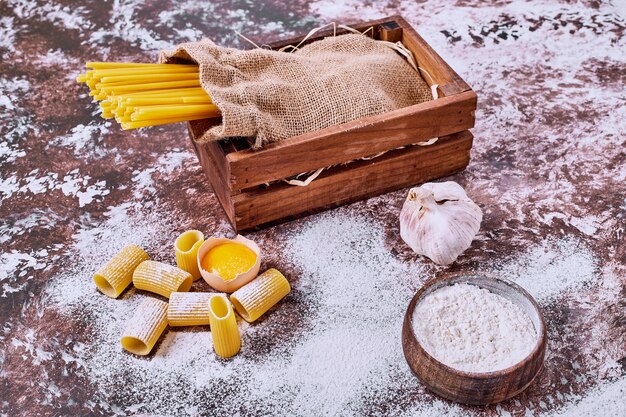How Long Does Cooked Pasta Last in the Refrigerator? Your Ultimate Guide to Safe Pasta Storage 🍝
Cooking a big batch of pasta can be a lifesaver when looking to prepare meals ahead of time. Whether you're an expert chef or a busy individual trying to maximize your weeknight dinners, knowing how long you can keep cooked pasta in the refrigerator is essential. This guide delves into the nuances of pasta storage, helping you maintain freshness and avoid waste.
Understanding Pasta Shelf Life: The Basics
Cooked pasta, like many other foods, has a limited shelf life when stored in the refrigerator. While pasta isn't a high-risk food for spoilage, like raw chicken or seafood, improper storage can lead to texture changes and, in some cases, unhealthy bacteria growth.
Factors Affecting Pasta Shelf Life
Several key factors impact how long cooked pasta stays fresh. Understanding these can help you optimize storage conditions to extend its usability:
- Type of Pasta: Fresh pasta tends to have a shorter shelf life than dried pasta due to its moisture content.
- Ingredients: Sauces, oils, and additional ingredients mixed with the pasta can affect its longevity.
- Storage Conditions: Proper packing and refrigeration methods can significantly extend pasta's freshness.
Optimal Storage Practices for Cooked Pasta
To ensure your cooked pasta lasts as long as possible, consider adopting the following best practices:
Refrigeration Techniques
Cool Quickly: Let your pasta cool to room temperature before storing it in the fridge. Rapid cooling helps prevent bacterial growth.
Use Airtight Containers: Store pasta in airtight containers to maintain moisture and prevent it from absorbing odors or bacteria from the fridge.
Label and Date: Keeping track of when the pasta was cooked helps you monitor its safety and freshness.
Recommended Storage Duration
Generally, cooked pasta lasts 3 to 5 days in the refrigerator when stored in optimal conditions. Within this timeframe, the pasta maintains a quality flavor and texture.
Signs of Spoilage
Always inspect stored pasta before consumption. Look for:
- Unusual Odor: A sour or off smell can be a sign of bacterial growth.
- Change in Texture: Slimy or sticky pasta suggests it's past its prime.
- Visible Mold: Mold is an obvious indication the pasta should be discarded.
Extending Pasta's Shelf Life: Beyond the Fridge
If you cooked more pasta than you can consume within a few days, consider these alternatives:
Freezing Pasta
Freezing is an effective way to extend pasta's shelf life.
- Best Practices for Freezing:
- Portion Properly: Divide pasta into serving-sized portions before freezing.
- Use Freezer-Safe Bags: Squeeze out excess air to prevent freezer burn.
- Thaw Correctly: Defrost in the refrigerator or reheat directly from frozen for best results.
Frozen pasta can last up to two months, providing a convenient future meal option.
Reheating Tips
When reheating pasta, aim to retain its texture and flavor:
- Stovetop Reheating: Toss pasta in a non-stick skillet with a little oil or sauce, warming it on medium heat.
- Microwave Reheating: Cover pasta with a microwave-safe lid or damp cloth to maintain moisture.
- Oven Reheating: Place pasta in a baking dish, add some sauce, and cover with foil to prevent drying out.
When Pasta Goes Bad: The Importance of Food Safety
Eating spoiled pasta can lead to foodborne illness. It's vital to follow safe food practices to protect your health.
Key Safety Steps
- Always refrigerate cooked pasta within two hours of cooking to minimize bacterial growth.
- Avoid leaving pasta at room temperature, especially on hot days.
Summary: Top Tips for Pasta Storage and Safety 🍴
Here's a quick look at essential tips to keep your pasta fresh and safe:
- 🕒 Cool quickly and store within 2 hours.
- 📅 Eat within 3-5 days or freeze for up to 2 months.
- ⭕ Use airtight containers to maintain quality.
- 🚫 Discard pasta with off smells, textures, or visible mold.
By understanding these guidelines, you can enjoy your pasta dishes worry-free, reducing waste and maximizing flavor.
Final Insights on Pasta Storage
Storage practices play a pivotal role in maintaining the quality of your cooked pasta. Properly storing and monitoring pasta not only extends its shelf life but also ensures safe consumption. By following the steps outlined above, you make the most of your meals, ensuring they are both delicious and safe for your household. Enjoy your pasta creations and the convenience they bring, without the stress of compromising on safety or quality. 🍽️
